The Acolyte Ep3 challenges our certain point of view.
Get ready to read a lot about philosophy and witches.
The Short Take:
The moral relativism becomes richer as it becomes more explicit, and in the process I am reminded of an old Jedi friend.
[SPOILER WARNING: This review contains details from the first three episodes of The Acolyte. There is also a brief discussion of select events from the series Ahsoka.]
Image Credit: StarWars.com
The Long Take:
From wuxia to toothy-grinned helmets. From death by suicide to a new coven of witches who can create life with The Force. The Acolyte so far has shown us much that is new for Star Wars. And, if I had to guess, that is likely a contributing factor to the mixed reviews. Anytime something is new, reactions have the potential to be polarized. And that’s fine, as long as the discourse remains thoughtful.
The subjectivity-induced moral relativism that I believe defines The Acolyte thus far, however, has been a part of Star Wars since the Original Trilogy. In Return of the Jedi (1983), Force Ghost Obi-Wan Kenobi returns to Luke after he has learned that Darth Vader is his father in The Empire Strikes Back. When Luke accuses Obi-Wan of lying to him, Obi-Wan explains that, to him, the Anakin Skywalker he knew died when he fell to the Dark Side, and Darth Vader took his place. He says, “So what I told you was true, from a certain point of view…Luke, you're going to find that many of the truths we cling to depend greatly on our own point of view." While the good guys and the bad guys do appear to be more clearly delineated in those early films, this conversation between Luke and Obi-Wan opens the door to a moral gray area. In the context of Return of the Jedi, I think this is important because it also opens the door to Darth Vader’s redemption. Luke needs to give credence to his certain point of view — that Anakin Skywalker still lives and therefore can be brought back to the Light Side. That someone who has done so many terrible, evil things, can still be a good person capable of good things. If he adopts Obi-Wan’s point of view, he never saves his father at the end of the film.
Image Credit: CBR
The different points of view on Anakin Skywalker and who is good and who is bad become even more pronounced in the Prequel Trilogy, in which The Jedi Order find themselves on the wrong side of a war without realizing it. This time, George Lucas poses the inverse question: how can good guys who are trying to do good in fact do bad, and, in the case of Anakin, become bad? From their point of view, the Jedi were keeping the peace and upholding an upstanding republic. From the point of view of many living through the Clone Wars, however, the Jedi were far from their heroes. And, as we know, Palpatine’s subterfuge confused right and wrong for Clones and Jedi alike.
This notion of the truth as dependent upon a certain point of view is one around which Leslye Headland has built her entire series. While the first two episodes already had planted seeds of doubt around which version of events were true, pitting Osha’s anger at her sister destroying her entire family (and her life, as she says) against Torbin’s extreme guilt as well as the blame Mae directs at The Jedi, it was this week’s episode that more explicitly brought the varied yet still certain points of view to the fore. In particular, The Coven and The Jedi have very different views on their encounter with one another, as well as on what should become of Osha and Mae. According to the Jedi, Mother Aniseya and the rest of her coven are breaking Galactic Law because they are raising Force sensitive children. They think they are taking Mae and Osha to protect the Galaxy and keep the peace. According to The Coven, however, the Jedi have unfairly dominated the Galaxy and persecuted witches or any other non-Jedi Force users, driving them into exile or hiding.
And so, to the witches, the “hand over your children” demand is an act of aggression and colonization. They argue back that Brendok does not fall under their jurisdiction, and that they should be left alone. Even though Master Indara says that the Padawan testing would be conditional on the permission of Mother Aniseya, she very tellingly uses the word “right” to describe the test. That it is the Jedi’s right to test potential Padawans. “Right” implies an assumption of entitlement. If someone has a right to clean water, for example, that means they get clean water no matter what. So it would seem that Indara is really saying that they’re going to test Mae and Osha no matter what.
Image Credit: IGN
Who is right and who is wrong? Is it right to separate a mother from her children? Is it right to create beings by manipulating The Force/The Thread, perhaps at the expense of a dire cost (though that is unconfirmed at this point). Is taking Osha away from the Coven okay because she would do so willingly, or should she not be left to make that decision for herself because she is so young? I think the answer to any of these questions would depend on who is answering them. And comments Headland has made indicate that this is the very point of the show. In a roundtable interview that I listened to on the Coffee With Kenobi feed, for example, Headland said that her previous series on Netflix, Russian Doll, is similar to The Acolyte because both are “seeing things from two different sides…between Amandla’s characters, flipping back and forth between who’s good and who’s bad…” And, of course, Mother Aniseya very pointedly says, “This isn’t about good or bad; it’s about power and who’s allowed to use it.” This establishes a moral relativism because it does not necessarily make a judgment about any one ideology or use of The Force as a universal or absolute truth, but rather acknowledges that many exist.
I don’t like using academic terms casually without doing at least little research on them. After some browsing, I landed on The Oxford Handbook of Ethical Theory, which has a lot to say about this but isn’t so nuanced that a non-philosophy scholar like me couldn’t follow. The most accessible explanation of moral relativism was a comparison to theoretical physics: “Just as Einstein's theory of relativity says that various physical attributes like mass, length, and duration have definite quantitative measures only relative to a frame of reference, so moral relativism says that determinate answers to questions about what we morally ought to do can only be had once a frame is specified, either explicitly or tacitly.” Sometimes those standards can be set by an institution like the Jedi Order, like saying that all Force sensitive children must be identified at a young age so that they can learn to use the Force responsibly (before they get to old like Anakin or even Osha). Other times those standards come from a community, like The Coven: that everyone should be allowed to wield The Force, unregulated by any external laws.
What I noticed as I was reading, though, was that a prevailing relativist theory currently in moral philosophy is “speaker relativism,” which proposes that the moral system of the speaker is the relevant one in any given context. This is where the subjectivity I mentioned earlier comes in, and why the structure and approach this series employs is useful as an intellectual exercise. The logical extension of speaker relativism that I see is that it’s not just institutions like religions that can set moral standards through which an individual makes moral judgments, but rather that individual’s entire lived experience also factors into their morality. To put this in terms of The Acolyte, Osha’s experience as we see in “Destiny” colors her entire outlook on the Jedi. She was already resistant to becoming a witch before the Jedi arrived on Brendok, essentially being peer pressured into going through the Ascension ceremony because it was what was expected of her. So, to her, the Jedi were her saviors. They presented her another path that appealed to her longing to meet other children and see the Galaxy. So that is why her memory of the events in this episode would be more positive towards The Jedi, setting the parameters for her moral judgment of the Jedi as good and worthy of her faith. And while Mother Aniseya does come to support Osha’s dreams and accepts that she would leave (just as Shmi does with Anakin, albeit much more quickly, in The Phantom Menace), Mae and Mother Korril do not accept this outcome and see Osha’s leaving as wrong.
Image Credit: StarWars.com
What I really love about this episode is that it challenges us to hold multiple truths and multiple perspectives at once. That both The Jedi and The Coven can be right and wrong at the same time. That my fav, Master Sol, genuinely cares about Osha’s wellbeing, but is also super creepy for showing her a lightsaber to lure her away from her own family. That The Coven is right to question why The Jedi are the only ones who should wield The Force, but at the same time might be wrong to assume that both twins should want to become witches and take over The Coven upon Mother Aniseya’s death. The moral truth is entirely dependent on speaker relativism, or, as Obi-Wan would say, a certain point of view.
All this leads me to believe that this is not the last flashback episode that we will get this season. A lot of critics are throwing around the term Rashomon, but for those who are unaware of that reference, Rashomon is an Akira Kurosawa film from 1950 that uses multiple characters’ conflicting accounts of a samurai’s murder to tell the story. The general technique of showing multiple versions of an event in the same story has since been named the “Rashomon effect,” after this film. And, as I’ve already said, multiple perspectives on the Brendok incident had already cropped up in prior episodes, but I think that this episode is one of several flashback episodes we will see, each anchored in the subjectivity of one of our characters. The naming conventions used for each episode so far point me in this direction, as the first two episodes use a slash formation to include a duality: Lost/Found and Revenge/Justice. Mae and Osha could be lost or found, depending on your perspective. Mae and Osha could be seeking justice or revenge, depending on who you ask. But this episode is just “Destiny,” which leads me to believe that it represents one character’s perspective more than the others. Osha is the most likely candidate because she is the one most likely to view Jedi interference as her destiny to leave home and become a Jedi. And, don’t forget, Mother Aniseya says to her that she must choose to pull on the Thread that will bring about her destiny. So the concept of destiny does seem to have the most ties to Osha. I think we will at least get one more single-word titled flashback episode, representing Mae’s perspective. I’m taking suggestions for what that word would be. Betrayal? Fall? Incursion? We could get yet another that is from Master Sol or the group of Jedi, but I’m less confident in that given the total number of 8 episodes.
The only complication to the Rashomon structure I suspect is in store is that I feel like this episode does still mix in scenes that could represent the more objective truth. Because what characters say very decidedly conflicts with what the camera shows us. For example, Sol says that all of The Coven died in a fire started by Mae. That is what he tells Osha as they flee. But the camera has that bird’s eye shot that definitely shows us piles of dead bodies that were NOT burnt or on fire. So something doesn’t add up about Sol’s narrative and I have a feeling we are going to get more of the story to gradually work our way towards a more complete, if conflicted, picture going forward.
Image Credit: Screen Rant
While the concept of a narrator for a novel is not particularly controversial, in cinema studies the idea of a film or television series having a narrator by default is a bit more fraught. Many viewers and even film critics would say that films only have narrators when they employ voiceover because otherwise moving images are inherently more realistic or can simulate reality more. Cinema studies and narrative theory, on the other hand, struggle with where the narrator’s presence in a film begins and ends until the 1980s, at which point the discussion peters out, leaving the issue unresolved. Some scholars describe the camera as a narrator figure and ascribe film narration exclusively to camera work, other critics such as David Bordwell argue that “all materials of cinema function narrationally – not only the camera but speech, gesture, written language, music, color, optical processes, lighting, costume, even offscreen space and offscreen sound.” Here, I think Headland might rely on SPEAKER relativism to work out issues of subjective truth, and perhaps leaves the narration of the camera as the clearer, less ambiguous handlebar for the audience. That is, only what characters are saying are reflective of conflicting points of view, but if the camera shows us a pile of bodies that do not seem to die by fire, we as viewers should trust that as a more objective truth. This may not turn out to be true as we get further into the story and actually see images that conflict with images in this episode, but either way, it makes each episode a rich text to interpret.
And, again, what may make this series difficult for many Star Wars fans is that the series, in the process of challenging the characters’ own morality, challenges the audience’s point of view as well. When this episode questions The Jedi’s moral edicts, so too does it question the assumption that what we think is good is actually good. If everything is relative, then what we think is good is just what we think is good as opposed to what is actually good. At that’s a very scary, uncomfortable place for anyone to be.
As Star Wars fans, our point of view has primarily been aligned with Jedi good, Sith bad. And we have aligned ourselves with the idea that in Star Wars, The Force is all there is. The idea that The Force is just one interpretation of how our Galaxy far, far away works is fairly mind-blowing the more I think about it.
Image Credit: StarWars.com
So what does this new language to describe the mechanics of the Star Wars universe — “The Thread” — actually mean? The main point of exposition we get in this episode is when Mother Aniseya is teaching Osha and Mae in preparation for the Ascension ceremony. She says, “All living things are connected by the same Thread. A thread woven through all existence. Some call it a Force and claim to use it. But we know, the Thread is not a power you wield. Pull the thread, change everything. It ties you to your destiny. It binds you to others.” There’s a lot of interest to unpack here, but the line about “Some call it a Force and claim to use it” stands out the most because that very clearly signals that The Thread is a competing theory about the universe and how it works. I have heard many say that it’s just two ways of describing the same thing (Ah, I almost said force! How ingrained it is!), but I think that’s a little too simple. As a teacher of writing and communication, difference in language, and more specifically word choice, is everything. It can completely change the underlying values you express to the rest of the world.
Not until I watched this episode did I think of the word “force” as a more aggressive or combative word. I’m so used to thinking of “may the Force be with you” or “use the Force” as a Zen buddhist, pacifist sentiment. But, as I’ve been harping this entire review, everything is relative. Mother Aniseya implies here that some Force users mistakenly think that the Force is a means to an end or a commodity rather than a metaphysical ecosystem.
As an aside, I am reminded of Disney’s Pocahontas. (Apologies in advance for the digression.) The song “Colors of the Wind” contains the following lyrics:
You think you own whatever land you land on
The Earth is just a dead thing you can claim
But I know every rock and tree and creature
Has a life, has a spirit, has a name
Suddenly these words sound like they’re describing The Force/The Thread, leaning more towards the ideology underpinning the Thread. Not sure what to do with that observation just yet, but perhaps it codes the witches as more in tune with nature and maybe even more peaceful than The Jedi?
I should acknowledge for a moment that this debate also exists amongst Jedi. I do feel like the “it’s not a power you wield but a balance,” has, again, always been a part of Star Wars’ internal discourse. Mother Aniseya’s description is not that far off from Obi-Wan Kenobi’s: “It is an energy field created by all living things. It surrounds us and penetrates us; it binds the galaxy together.” Bind the galaxy together is not all that different than “it binds you to others.” The key difference, though, is that Obi-Wan’s statement is preceded by a comment about how The Force is what gives the Jedi their power. That seems more in line with what Mother Aniseya critiques — the idea that this is a power to be harnessed and used.
Leslye Headland’s characterization of The Coven, from that same CWK roundtable interview, indicates that it’s the collectivism of The Coven vs. the individualism of The Jedi that are really at odds here. She says, “My version of it [witches] is more about a collective that utilizes the Force differently than the Jedi do, and would rather be left alone so that they can develop their own way of manipulating it, using it; whether it’s for good or bad is kind of left up to the audience’s interpretation of them.” Not only does this reaffirm my understanding of the Rashomon-informed moral relativism discussed earlier, but her use of the word “collective” here seems important. The witches, after all, utter several times the mantra of “The power of one. The power of two. The power of many,” which offers a very different model than one individual Jedi communing with The Force, alone.
“Thread” also has ties to the history of witches, which, in Western literature, often rely on the power of three. This is not even the first time we’ve heard a witch in Star Wars use the term. As I explained in a previous review of the Ahsoka series, the “threads of fate” concept traces back from the three Dathomiri witches on Peridea to the three witches in Shakespeare’a Macbeth to the three Fates in Greek and Roman mythology. These Fates were able to spin, measure, and cut the thread of life, ensuring that everyone lives out the appropriate destiny. In Ahsoka, the references to “the thread” echoes this correlation between manipulation of the thread with fate or destiny. They say, “The thread of fate has spoken to us. Another comes. A Jedi. They ride the travelers,” referring to Ahsoka on the purrgil. And at the end of the episode, when Thrawn calls upon them to “once again” use their dark magick, they answer with “The thread of destiny demands it, Grand Admiral.” When I originally watched the Ahsoka series, I had assumed the reference to the thread of fate or destiny was primarily metaphorical; but now I see that they too were probably referring to The Thread as opposed to The Force.
Image Credit: Collider
What does this, then, tell us about The Thread as an alternative to The Force? Again, I go back to the metaphysical ecosystem. The way Jedi describe The Force often seems very directional and singular. You use it once, one time, and that’s it. The witches — both from The Acolyte and Ahsoka — represent The Thread as in dialogue with the witches, and, especially in the case of Mother Aniseya, engaging with The Thread has consequences in other places. If you pull The Thread, as she tells Osha to do, there are consequences beyond that one moment. The historical reference to witches in our own literary history reinforce all this because The Fates were able to manipulate their thread and determine the course of someone’s life. This makes me think this is wielding The Thread is almost like playing god. The Greek Fates, after all, were actually goddesses. Maybe that is why The Jedi seem so afraid of them — threatened by them.
Whatever the reason, I can’t wait to see how this story continues to unfold, with all its points of view.




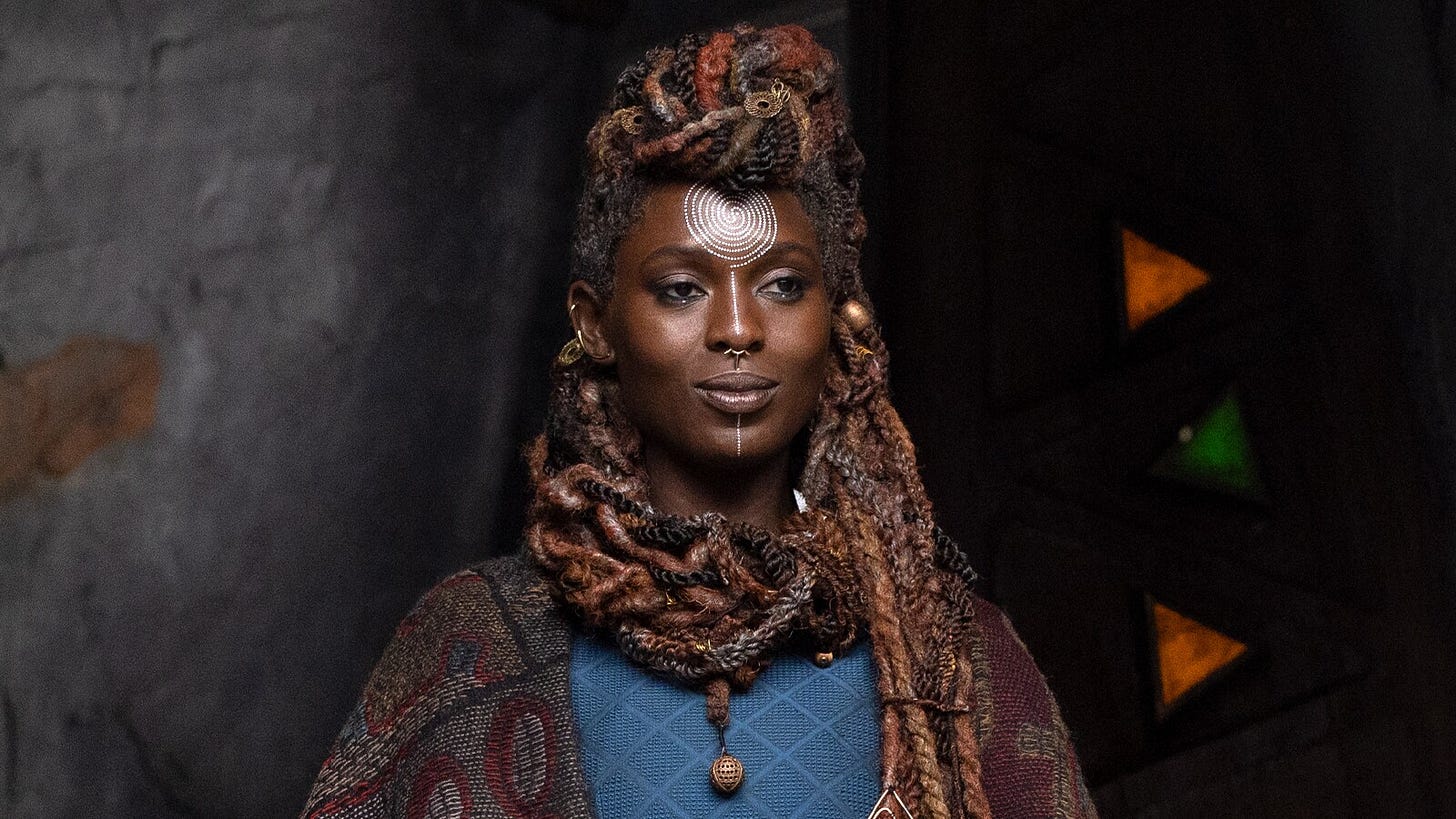
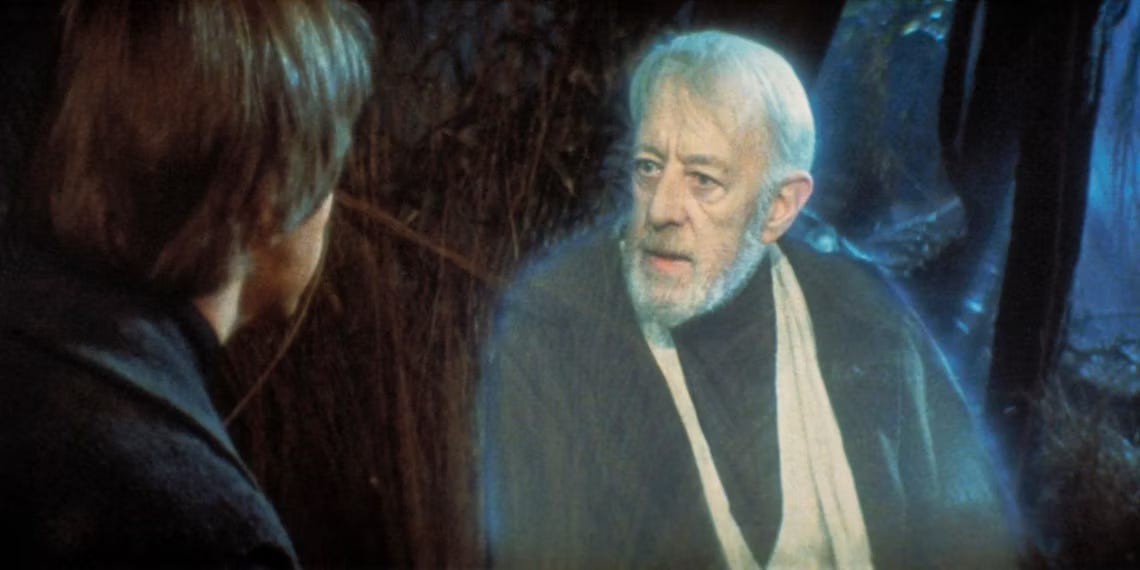
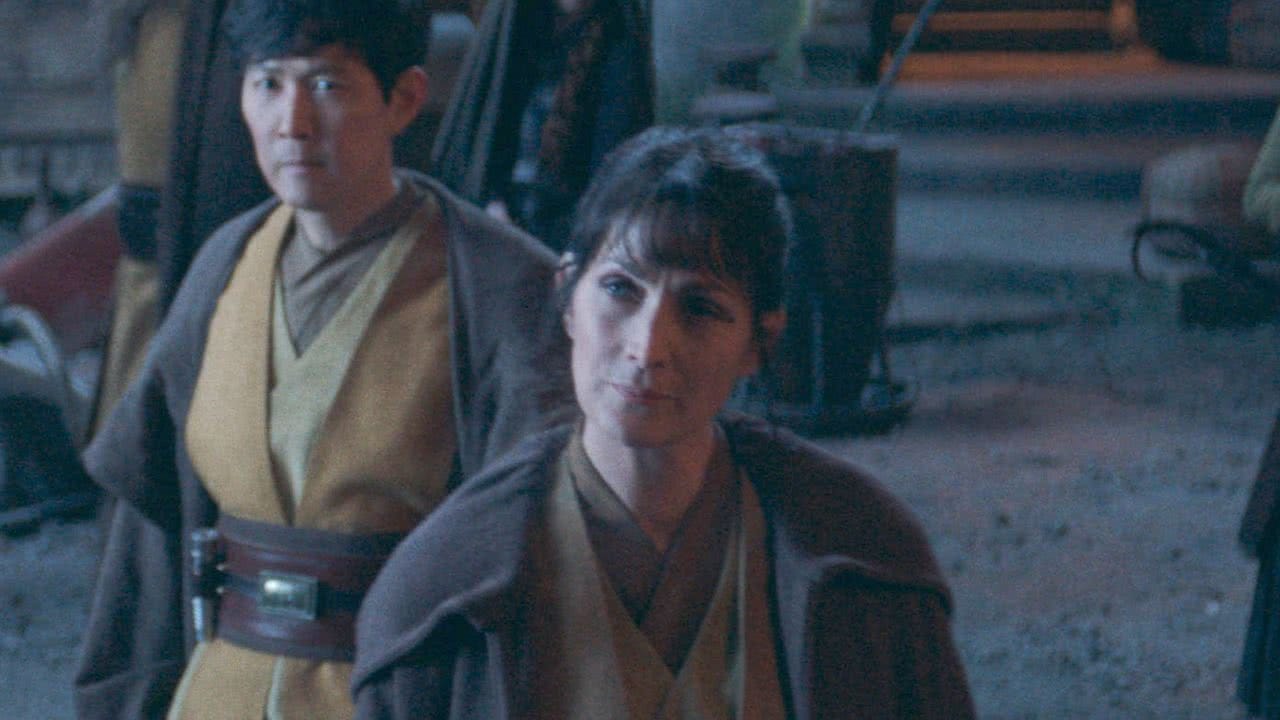
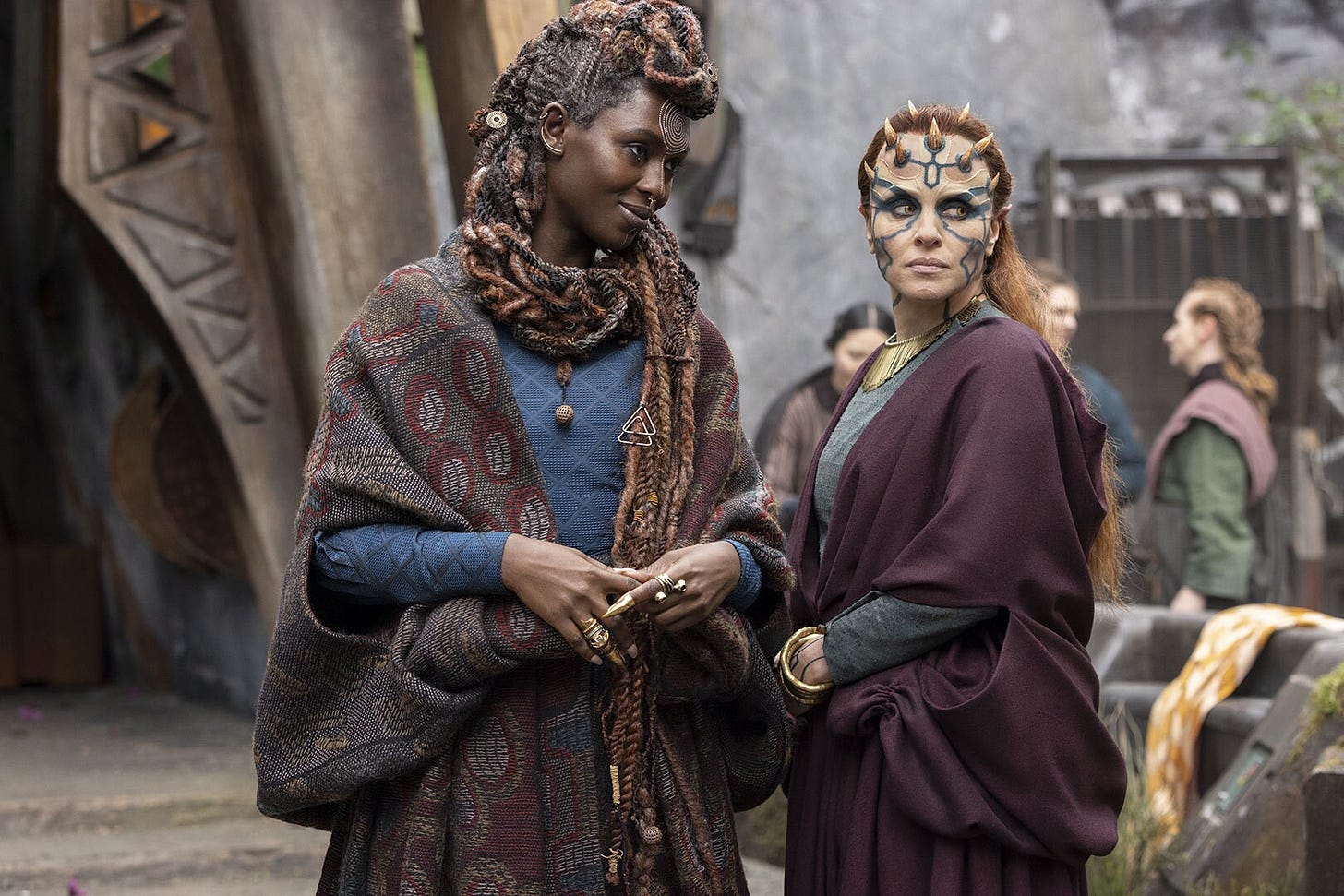
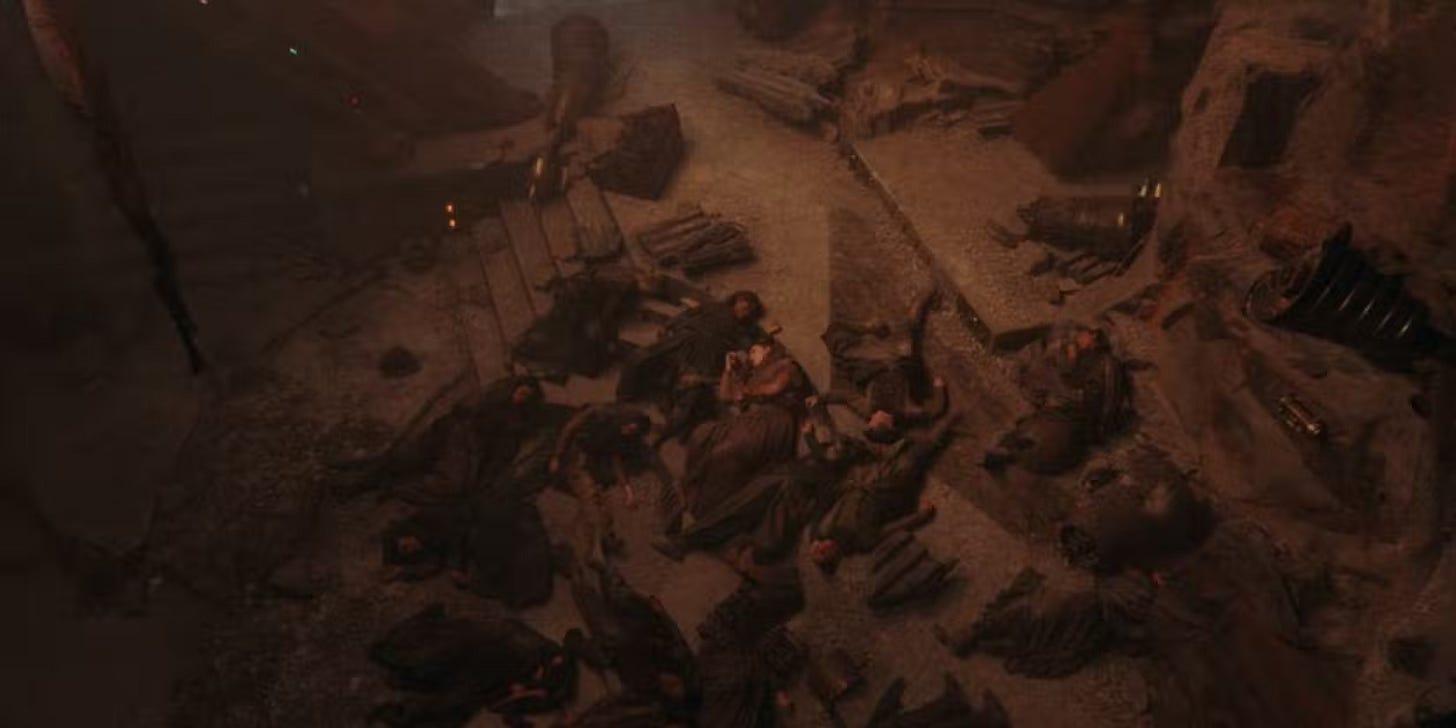
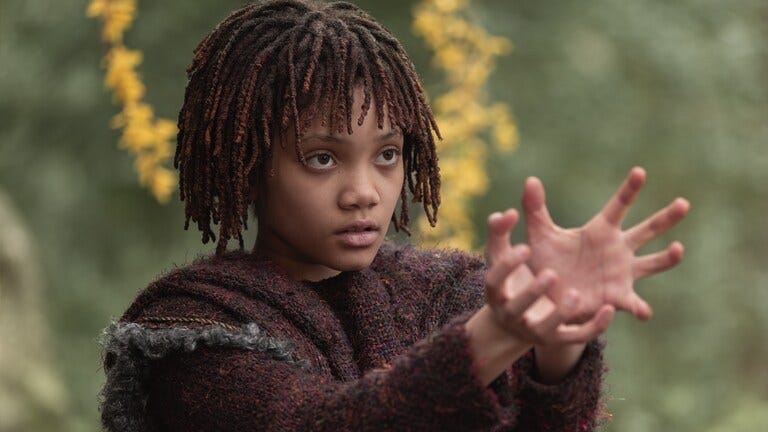
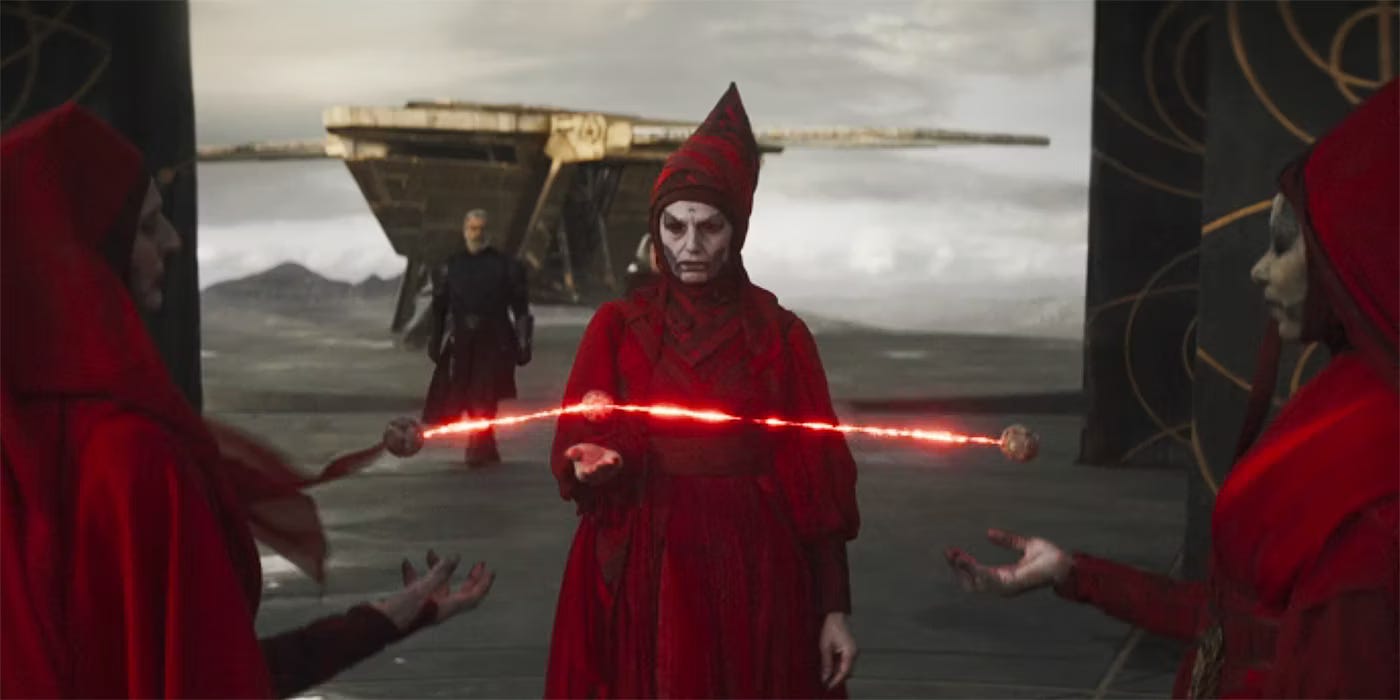
Interesting article! Really liked the exploration of "from a certain point of view" with speaker relativity. I've really been enjoying this series. Am interested in the view that the witches viewpoint could be more peaceful than the Jedi as I've seen a few posts with that idea even though they threaten the Jedi in the first meeting, Mae uses the force/thread to hold the insect inplace when meeting Osha, and when discussing the thread Mother is demonstrating how powerful it is (which could be defensive or offensive). Hope (and assuming) we'll see more about them in future episodes.
I thoroughly enjoyed reading this!